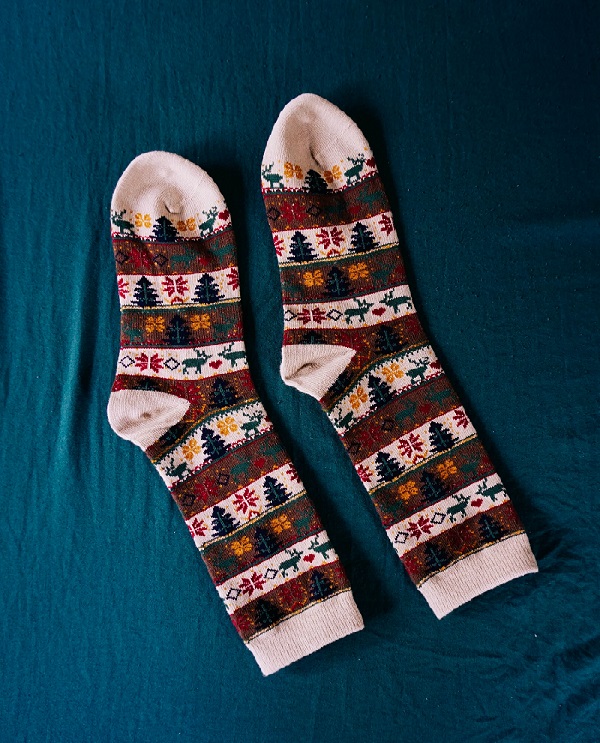How Does Sock Yarn Play an Important Role in Handcrafted Socks

Do you intend to make socks out of yarn or crochet? The yarn you use can make a major impact on how long your finished creation lasts and how professional it looks. I used to believe that any yarn could be used to make decent socks, but I was mistaken! It made a huge difference once I started using the right yarn!
There are numerous aspects to consider while selecting a sock yarn. Do you like socks that are self-stripe, socks that display the stitch detail, or bright, multicolored socks? The first step is to have an idea in your head of how you want your finished handcrafted socks to look.
About Sock Yarn
Sock yarn is a term that refers to both a specific type of yarn and a broad category of yarn. Sock yarn, in its broadest sense, refers to any yarn used to create socks. It can be lace-weight or worsted, and it can be made of almost any fiber under the sun. Different yarns can be used to make different types of socks for different purposes. The majority of sock yarn, on the other hand, is yarn designed expressly for that purpose. It is normally light, but can be heavier, and is knit on little needles.
Picking the Yarn
If you’re new to knitting socks, you should generally start with sock yarns because they’re more durable and simpler to wash than similar weight yarns that aren’t meant for socks. You can use other yarns, but keep in mind that they may not hold up to wear on the foot as well as a standard sock yarn. You can end up having socks that you don’t want to wear with shoes, which is great as long as you know that going in and aren’t disappointed by the lack of durability. If you want to try a yarn that isn’t designed for socks, knit a swatch and take it around with you for a time. Rub it vigorously to make it feel like you’re in a shoe. It’s not the ideal choice for socks if it starts to look worn immediately away. Let’s have a look at the things to think about while picking yarn for your next (or first!) pair of socks.
-
Final application
Consider where these socks will be worn and the conditions they will be exposed to. Will these be boot socks, which are often made of strong wool yarns? Or will they be exquisite, tiny bed socks that you don’t wear with shoes and must be made of a thin yarn?
These parameters have a significant impact on the sort of yarn you require. If you’re sewing socks to wear around the house, you can use worsted weight yarn or even bulky yarn to make them look more like slippers.
However, if these socks are designed to go inside shoes, you must consider how much space most people have in their shoes – usually not enough for a large sock. (Boots, on the other hand, are a different story!)
So the first thing to think about is how the socks will be worn.
-
Moisture absorption
Socks are worn at a variety of events and settings. Almost everywhere there is humidity, and perspiration ruins your day. As a result, keep in mind that your socks should be able to absorb perspiration well. This ensures that you do not slip or become entangled in an awkward circumstance. Wool socks are the finest option in this circumstance. They can absorb up to one-third of their own weight in water before feeling wet. So, if you’re going to a football game, wear wool socks and watch how your dry feet can help you win!
-
Availability
Sometimes I just want to feel the yarn before I decide on it. Can you identify it? I like to squish the skeins to feel the fibers.
So, as much as I enjoy online purchasing, there is something about being able to touch and feel the yarn that appeals to me. I usually use yarn that is locally accessible, although there are instances when I prefer to order online.
-
What is the event?
Who are the socks intended for? Are you going to give it to someone? If this is the case, take their decision into account. Do they prefer thick or thin socks, long or short socks, stretchy or stiff socks, single-colored or self-striping socks? If you wish to knit multi-colored socks, self-striping sock yarn is a terrific option. If you’re knitting socks for yourself and want to wear them somewhere, especially if you’re wearing them under some studs, go for long and thick ones. This would provide a better grip while also absorbing sweat. Invest in the best wool socks for sweaty feet.
-
Weight
According to experts, the best sock yarns are fingering, sport, and DK weight. These might range from 5-to 8 stitches per gauge. Typically, the quality of a knitted sock is determined by the gauge quality. The better it is, the easier the knitting procedure will be.
Hue
When choosing yarn for your socks, you’ll also have to consider color. The color you select will have a significant impact on how satisfied you are with the completed product.
If you want the stitches to stand out, use a lighter-colored yarn with a more solid hue (slight tonal tones are acceptable). Dark hues will conceal cables and other intriguing elements, whereas bright colors will obscure the stitching. So look for yarn in the desired color(s). There are numerous alternatives available, including self-striping yarns.